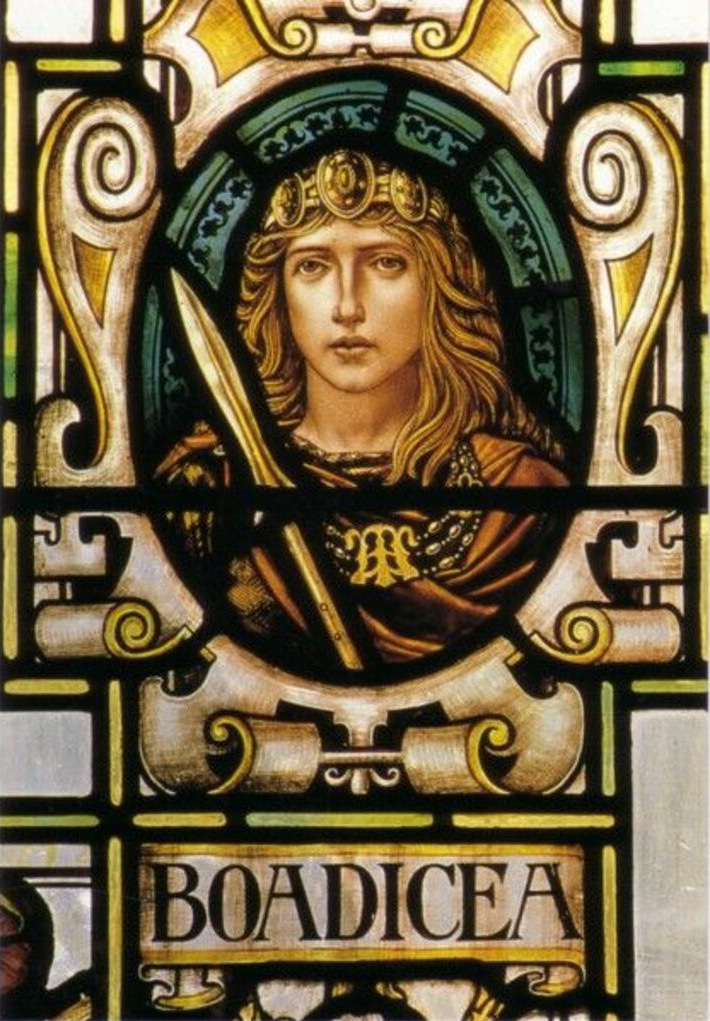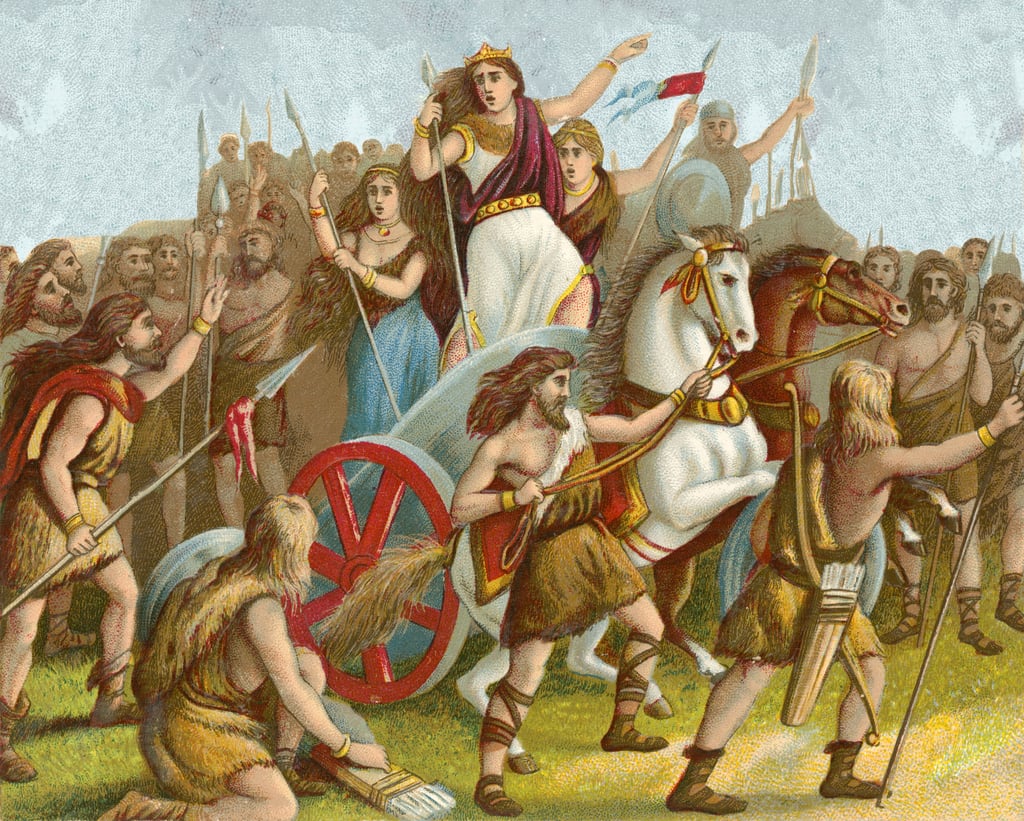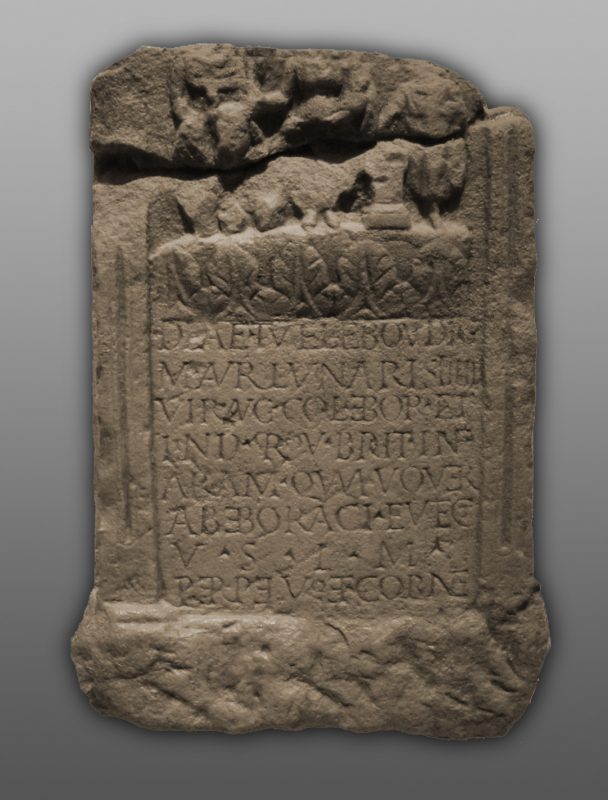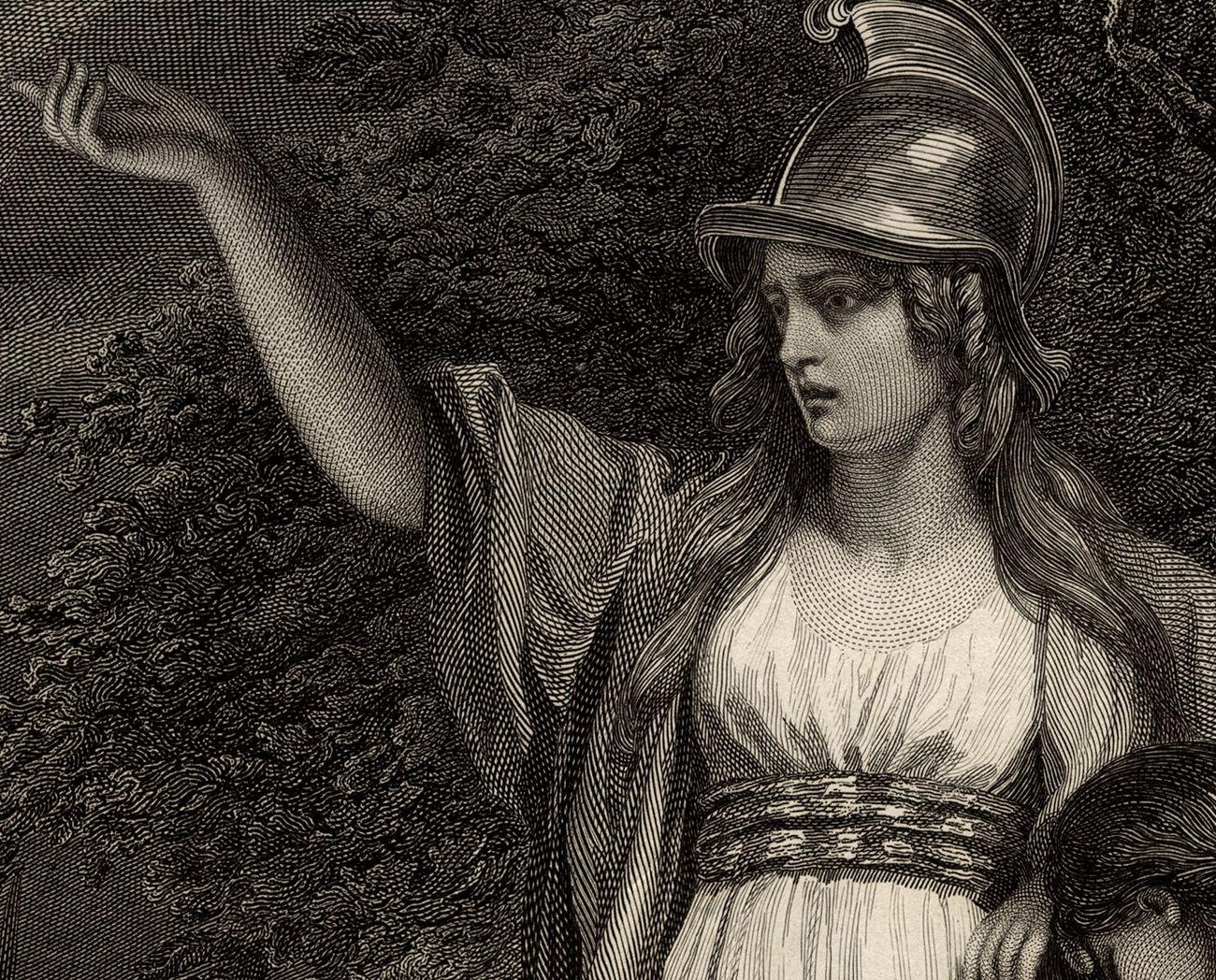Boudica is the British queen of the Iceni who led the tribes of Britain in revolt against their Roman conquerors in the first century AD. The name that Boudica used during her lifetime is not known, and she has also been known as Boudicca, Bonduca, Boadicea, and Buduica. So what name should we be using?

Tacitus & Boudicca
Tacitus records her name as ‘Boudicca’. His source for this was probably his father-in-law, Agricola who was serving in the legions in Britannia at the time of the ‘Iceni Revolt’. Agricola had possibly heard the name Boudica spoken or chanted during the conflict, but probably would not have seen it written down.
Cassius Dio & Buduica
Cassius Dio’s account, published over a century after Boudica’s death in Greek. Dio’s account survives not in full, but only in a tenth-century epitome, or summary, of Dio’s original. In his account Boudica’s name was translated to Buduica.
Where did the name Boadicea come from?

Tacitus wrote his the Agricola in c. 98 and Annals c. 110s, after the fall of the Western Roman Empire, most of the copies of these manuscripts were lost. Books 11-16 of the Annals, and what remains of the Histories, also survived in a single manuscript, found at the Benedictine Abbey of Monte Cassino in c1000 AD. Over the next 4 centuries additional copies and translations of the works were slowly moving around Europe. It was possibly during this period that a typo introduced by a nameless monk writing by candlelight, who accidentally swapped the ‘u’ into an ‘a’ and the second ‘c’ into an ‘e’.
Polydore Vergil wrote his Anglica Historia for Henry VII in 1526–27, and introduced us to Voadicia. Raphael Holinshed in his ‘The Historie Of England‘ written in 1577 mentions ‘Voadicia, Bunduica and Bunuica’. In 1658 Thomas Browne wrote Hydriotaphia, an interesting work on the “Discourse of the Sepulchral Urns lately found in Norfolk”, the name variant “Boadicea” was used. Boadicea also was the title of an eponymous English tragedy in 1697, one of several phonetic spellings adapted by seventeenth-century playwrights, including Ben Jonson and John Fletcher and by the poet Cowper in his 1782 ode to her. It then remained the most widely used variant for the next 200 years.
Why do we think Boudica is correct?

Whether Boudicca, Boadicea, Boadiccea, or Buduica; it would have been the Latinized version of her Brythonic Celtic name, and the convention has since been adopted that this would probably have been something similar to the name under which she is known in present day Welsh; which is, Byddyg, or literally, “Victory”. The English linguist and translator Kenneth Jackson concluded that the correct spelling of the name in Common Brittonic (the British Celtic language) would be ‘Boudica’.
Was Boudica a Name or an Epithet?
Boudica may have been a title or epithet deriving from a Celtic word ‘bouda’, meaning ‘victory’. There are various Celtic words for victory, notably the Old Welsh (bouda), Welsh (Buddug) and Irish (Buaidheach)— which derive from the Proto-Celtic feminine adjective *boudīkā or ‘victorious‘, which in turn is derived from the Celtic word *boudā ‘victory’
For example, an altar from Bordeaux to a local goddess Tutela Boudiga or “Tutela the victorious” suggests that the name Boudica describes a concept or quality rather than an individual.
Altar-to-Marcus-Aurelius-Lunaris - Altar-to-Marcus-Aurelius-Lunaris
In honour of the goddess Tutela Boudiga, M. Aurelius Lunaris sevir Augustalis of the coloniae of York and Lincoln, in the province of Lower Britain, [set up] the altar which he vowed on starting from York. Willingly and rightly did he fulfil his vow, in the consularship of Perpetuus and Cornelianus.
- Found in Bordeaux, in 1921 on Rue du Pont-de-la-Mousque during building works. The original altar is in the Musee d’Aquitaine in Bordeaux.
- The altar is made of millstone grit, a stone from Yorkshire.
- At the top of the altar is a frieze, though sadly a damaged one, depicting Lunaris making his sacrifice to Tutela. The goddess sits in the centre, holding a cornucopia. To her right stands a bull led by a priest and to her left, standing over his altar, is Lunaris. Tutela is notably larger than the two humans beside her, as befits her divine status.

We also have examples from a sepulchral inscription in Lusitania, where it appears to be used as a standard name. Much like we would use virtue names such as Faith or Mercy.
Sepulchral-inscription-from-Lusitania - Sepulchral inscription from Lusitania
Caeno, son of Lovius [set this up] to his father, Lovius, son of Caeno and to his
mother Boudica, daughter of Tongus and to his father-in-law, Cilius, son of
Tapaesus, and to his wife, Cilea, daughter of Cilius.
Annee Epigraphique, 1967, No 170 from Civitas Igaeditanorum .
http://eda-bea.es/pub/record_card_2.php?refpage=%2Fpub%2Fsearch_select.php&quicksearch=Lovio+Caenonis&rec=20158
How to Pronounce Boudica?
As far as pronunciation goes, the current thinking is that it’s Boo-Dik-Ah rather than the more flowery Bow-Diss-Ee-Ah.
